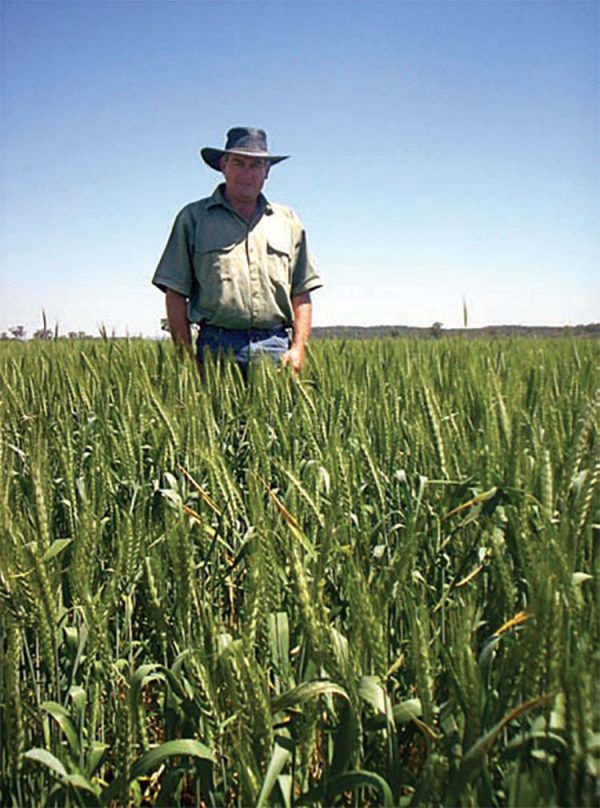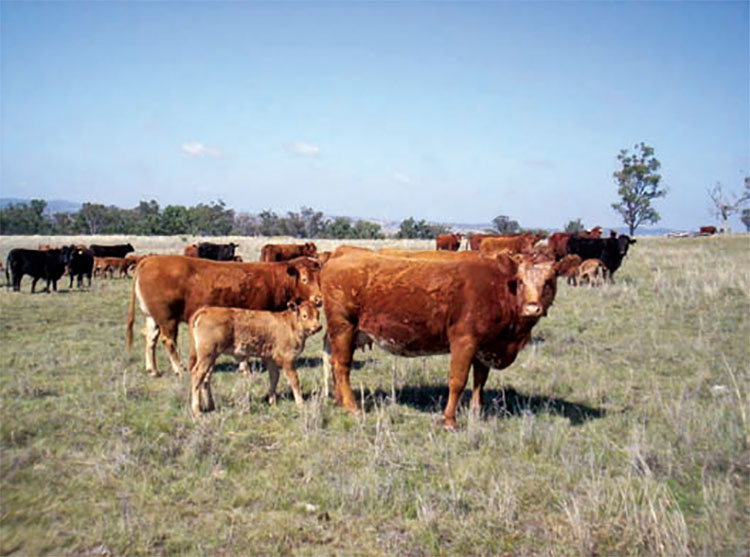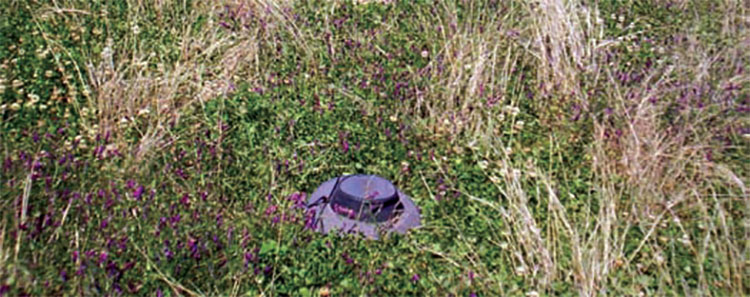
Case
Study
Location
Inverell, Victoria
Crop
Pasture
Bassett Family, ‘Pindaroi Station’ Inverell NSW
Northern NSW farmers, Geoff and Kaye Bassett, defied drought to produce an amazing 500 kilograms of beef per ha on their dual-purpose wheat and oat crops.
The key to their success is a revolutionary biological farming program which they claim has dramatically improved their soil structure and, as a direct result, plant vigour and animal health.
The Bassetts run 300 Limousin cows and grow bought-in steers for the feedlot trade on their 1,800 ha Inverell-district property, ‘Pindaroi Station’, which usually receives an average of 800 mm of summer-dominant rain a year.
Yearlings are run on a mix of winter and summer fodder crops, including oats, wheat, lab lab, cow peas and lucerne, sown into 800 ha of arable basalt soils, while the breeding herd grazes semi-improved pastures.
The Bassetts began an intensive fertiliser and pasture improvement program in their grazing country about 25 years ago, applying 125 kg per ha of single or sulphur-fortified super on their heavier basalt country.
This was accompanied by the introduction of sub and white clovers into the perennial native grasses, forbs and medics. “The super made a huge difference,” Geoff said.

Geoff Bassett inspects a wheat crop grown using a BioAg Fertilty Program.
“The existing medics quadrupled in production, the introduced clovers were prolific, the grasses became more palatable and our stocking rates doubled and even tripled on some paddocks.”
“The only negative was an increase in thistles and other weeds – but even so, I thought I was on a winner. By the late 1980s, we were running more than 12,000 sheep on a mix of fertilised native and improved pastures.”
‘Pindaroi Station’ was showcased by the Department of Agriculture as a “text book” example of pasture improvement.
“The vast improvement we achieved is burned into the minds of everyone who tried the same program – no-one could doubt its success,” Geoff said.
The Bassetts continued this high-input approach when they switched to grain and beef production in the early 1990s, but after some initial successes they began to notice the tell-tale signs of soil degradation in both their cropping country and their pastures.
Legume growth was steadily declining, the soils were getting harder and drier during winter and weed problems were worsening. Although it would have been easy to blame the decline on a run of below-average or nonseasonal rainfall years, Geoff began to suspect something more serious.
He attended a biological farming course run by BioAg. Here it was explained that BioAg’s biologically active solid nutrients and fermented liquid cultures are designed to improve natural soil fertility.
Applied as part of an integrated program in conjunction with conventional inputs, BioAg products provide an immediate and continuous supply of available nutrients directly to plants, as well as stimulating microbial activity in the soil.
“The main protection farmers have against dry weather is to maintain their soils in top order,” Geoff said. “BioAg seemed to have the answer to providing the sustainable performance that we had been searching for. I could really relate my experiences to what they were saying. Our costs were rising and our production was falling.”
Attracted by the prospect of improved soil quality and livestock performance with reduced inputs, Geoff began to implement a BioAg program in 2000. “We had three years of variable results, which I attribute to the poor seasonal conditions,” he said.
By the fourth year (2004), there was an obvious improvement in the soils and crops. In 2006, the results were amazing in spite of the average season.

Limousin cows on native grass pastures.
“There is a visible difference between our BioAg paddock and conventional paddocks. We had a huge problem with weeds, both numbers and diversity, meaning we were using higher rates of stronger chemicals.
“The weeds were more vigorous than the crops we were growing and herbicide resistance was becoming a real issue. Now our weed populations are so small they are uneconomical to spray. Their lack of vigour means the crops often choke them out.
“The other major difference is the softness of the soil. Our farming operations are so much easier with better soil tilth and moisture holding ability. The ground is much softer, even under grazed fodder crops.”
According to Geoff, this improved soil quality has had a direct benefit on plant vigour. “The BioAg crops continue to grow well, long after conventional paddocks have dried out and become hard,” he said.
“This year’s wheat crop was planted at the end of June and was runner-up in the local field wheat competition. The crop is even from fence to fence, and has the potential to be the best we’ve grown on these paddocks.

Sub and white clover have been incorporated into the native grass and medic pastures.
“The soil is beautifully soft and moist and the plants made excellent root growth. There was only the odd weed that the crop was choking anyway, which is remarkable given that the paddock was the dirtiest on the farm before we started the BioAg program.”
Geoff said the improved vigour of crops and pastures had translated into high quality fodder and livestock performance.
“We are achieving high weight gains and healthy stock on our BioAg crops and there is no tail in the mob,” he said.
“In 2006, our winter wheat and oat crops produced between 500 and 600 kg per ha of beef, which at $2 a kilo is a great gross margin! We’re also having fewer animal health issues such as bloat or other nutrient imbalances.”
Based on this success, the Bassetts have begun to progressively introduce a BioAg program across the entire property.
Download case study
Download a PDF version of the above case study.

Recent Comments